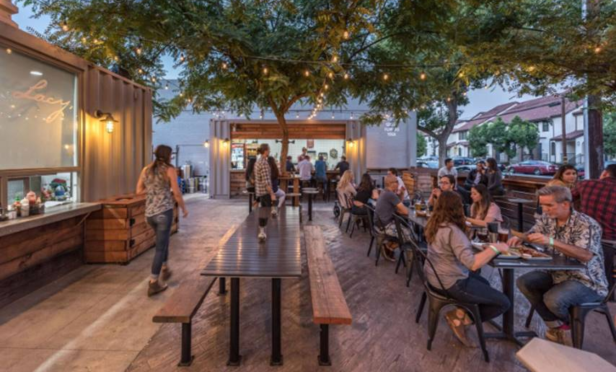 Construction costs are rising rapidly, and in Southern California, those costs have made it difficult to bring new supply, particularly apartments, to the market. On potential solution: shipping containers. It make sense. With proximity to the largest ports in North America, Southern California has a surplus of empty shipping containers, making them easily accessible and affordable. These are quickly becoming a popular construction material among forward-thinking developers.
Construction costs are rising rapidly, and in Southern California, those costs have made it difficult to bring new supply, particularly apartments, to the market. On potential solution: shipping containers. It make sense. With proximity to the largest ports in North America, Southern California has a surplus of empty shipping containers, making them easily accessible and affordable. These are quickly becoming a popular construction material among forward-thinking developers.
“Shipping containers are relatively affordable, and because we are in Southern California, there is a real ease of access,” Michael Bohn, senior principal at Studio One Eleven, tells GlobeSt.com. “We import a lot more than we export, and we end up having a lot more of these things laying around than we need. It is cheaper to leave them here than it is to put them on a ship and send them back to their point of origin. As we trade more, the amount in Southern California is exponentially growing. That creates an opportunity for us to use them in an affordable way for our developments.”
The reduced construction costs are the biggest benefit of the shipping containers. Bohn says that the cost is 10% to 15% less that traditional construction methods. This, however, isn't the biggest benefit. “The big proponent for using shipping containers is the construction schedule,” he explains. “Because the containers are offsite, improvements can be made offsite in advance. Traditionally, when you build something, you build the foundation, then the walls, then roof and the finishes. Because the containers are already done offsite, they can do a lot of work in advance of them coming to the site. What that allows is that when they do come to the site, they speed up the project schedule by about 40%, which is phenomenal.”
Studio One Eleven has worked on several of these projects throughout Southern California. Retail has been the most popular use for shipping containers in projects like Steelcraft locations in Bellflower, Garden Grove and Long Beach; The Roost in Downtown Santa Ana and Leisuretown in Anaheim. However, the possibilities are vast for shipping containers, and Studio One Eleven is starting to work on more complicated projects. “We started with one- and two-story retail developments, because there is less risk and technical issues, and getting city approvals is a lot easier. However, we are seeing a lot of interest now in affordable housing,” says Bohn. “Construction costs on affordable housing projects are now exceeding $500,000 per unit, which is incredible—it is so expensive to build. Because of the reduced construction costs and schedules, we think there is a great opportunity to use this for affordable housing.”
In fact, the Steelcraft projects in Bellflower and Garden Grove were installed in a single day after the development site had been graded and prepared for construction. Although these were smaller projects, this illustrates the dramatically reduced schedules of using shipping containers. Studio One Eleven is now working on a four-story 120-bed hostel in Long Beach as its foray into alternative uses, but it is also talking with developers about more complicated projects. “The containers are designed on ships to be stacked seven or eight stories high,” says Bohn. “That seems to be a sweet spot, and that is where we are looking at the next steps.”
So far, developers have been really interested in using shipping containers, especially in dense urban markets. “We are probably working with more forward-thinking developers in general, and they love working with these because it distinguishes them from their competitors,” Bohn says. “I think that developers are looking at this first on a small scale to work out any of the kinks and bugs, and then they will look at this building type for larger more dense projects.”
© Touchpoint Markets, All Rights Reserved. Request academic re-use from www.copyright.com. All other uses, submit a request to [email protected]. For more inforrmation visit Asset & Logo Licensing.






